
Arabianjasmineplant
Growing Arabian jasmine plants outdoors. Give your jasmine a sunny, warm location. Daytime temperatures between 80 and 90 degrees Fahrenheit and nighttime temperatures between 70 and 80 degrees are optimal for flower production. In fact, just one night with temperatures in the low 60s "can shut down flowering for 1 to 2 weeks," according to.

Arabian Jasmine blossoms Jasmine plant, Jasmine flower, Plants
Arabian Jasmine (Jasmine sambac) prefers warm and moist, and grows best in a well-ventilated, semi-cloudy environment. Soil with a lot of humus in the slightly acidic sandy soil is the most suitable. Most varieties of Arabian Jasmine are cold and drought-tolerant, and are not tolerant to frost, wet waterlogging and alkaline soil.
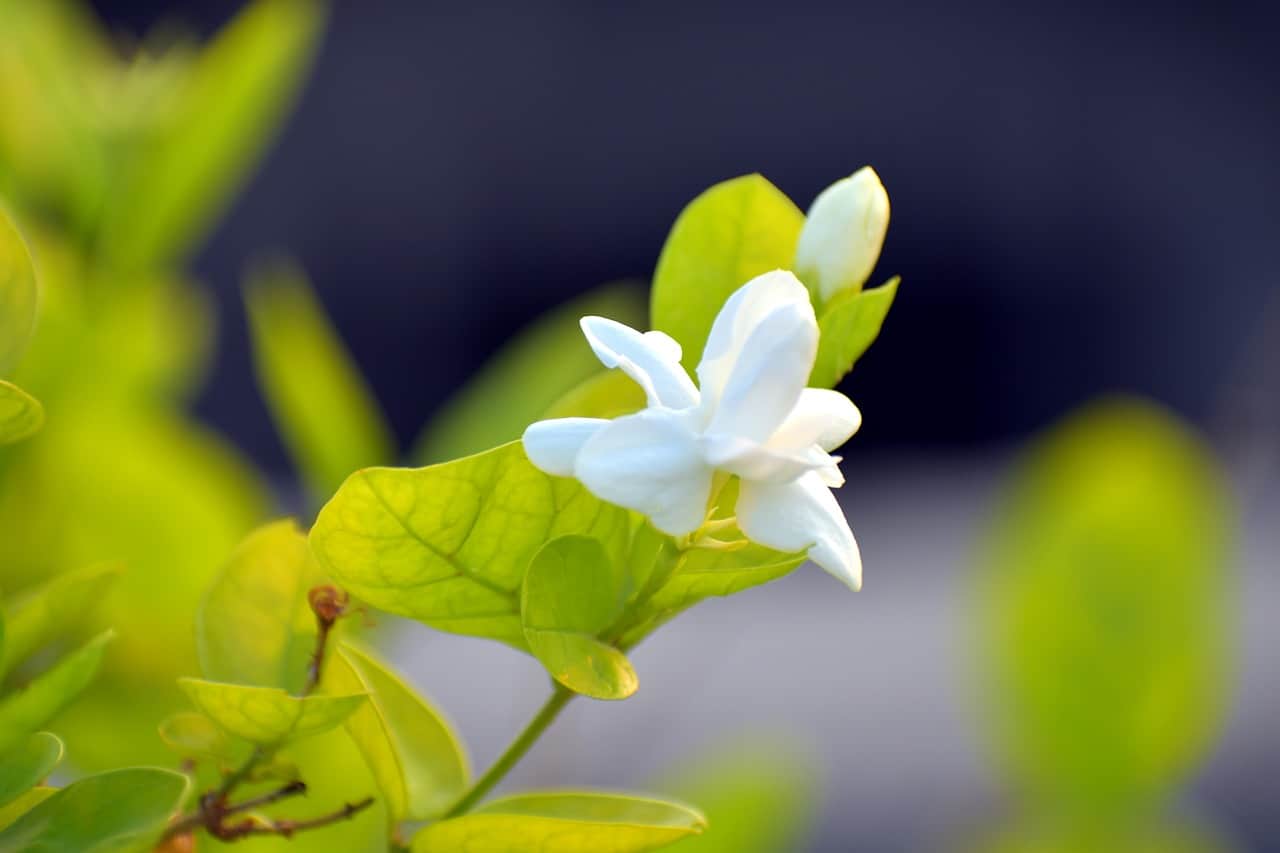
Arabian Jasmine Growing And Caring Tips
Arabian Jasmine needs 0.8 cups of water every 9 days when it doesn't get direct sunlight and is potted in a 5.0" pot. Use our water calculator to personalize watering recommendations to your environment or download Greg for more advanced recommendations for all of your plants. Water 0.8 cups every. 9 days.

Jasminum sambac (Arabian Jasmine) (1.2m)* IM Garden Mart
Arabian Jasmine grows up to 6-10 ft. tall and wide (180-300 cm). Thrives in full sun to part shade, in loose, humusy, evenly moist, well-drained soils. Supply plenty of water during the summer growing season, but reduce watering in winter. Virtually pest free. Watch for aphids and mealybugs. Prune as needed to maintain plant shape.
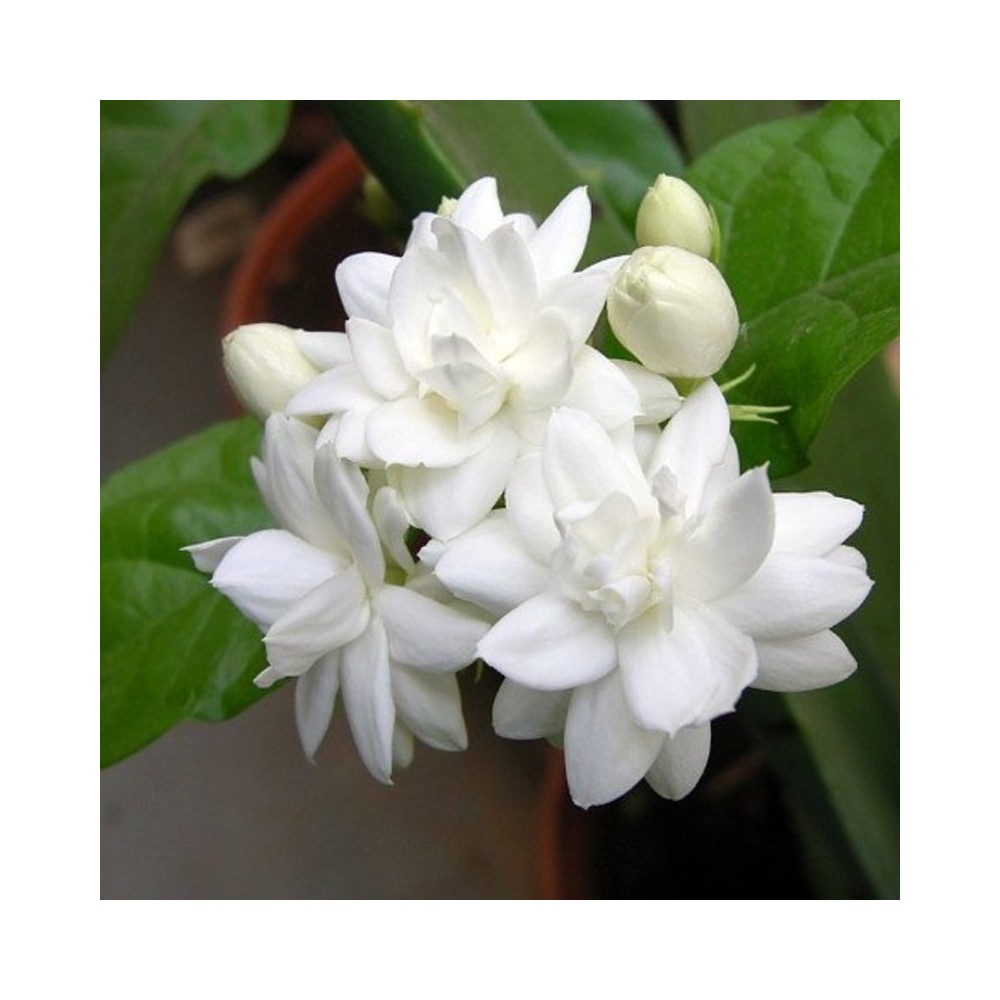
Buy Jasminum Sambac Mogra Arabian Jasmine Plants Online at lowest price
Looking For Arabian Jasmine? We Have Almost Everything On eBay. But Did You Check eBay? Check Out Arabian Jasmine On eBay.
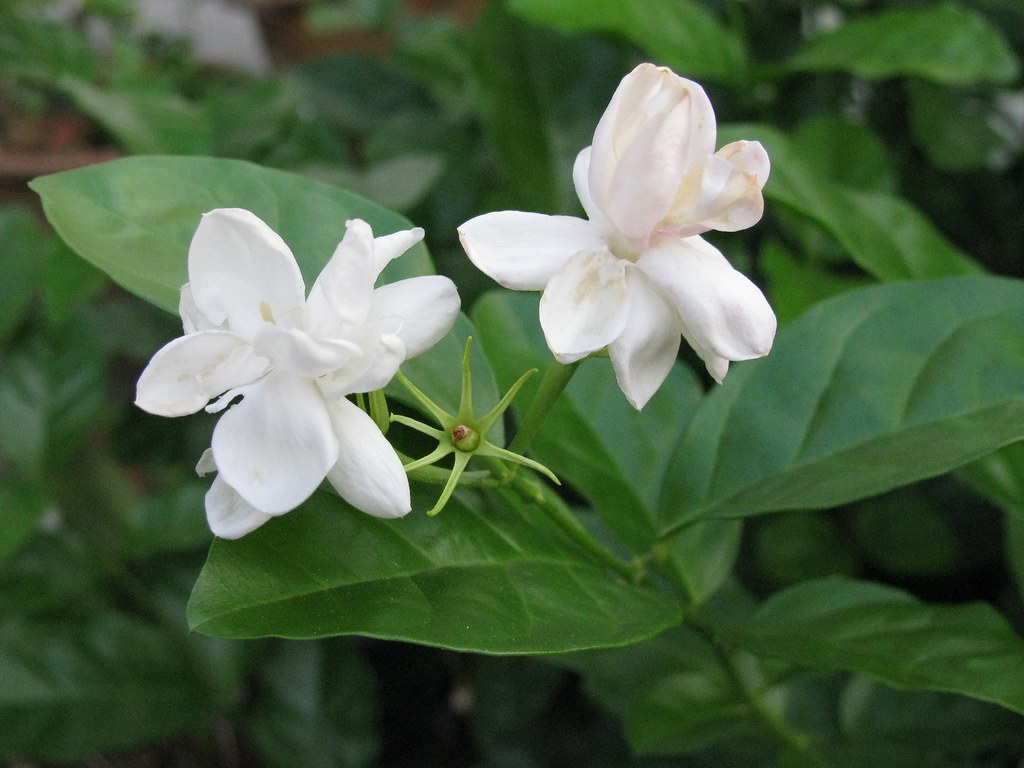
Jasminum sambac Arabian jasmine plant care and culture Travaldo's blog
Arabian Jasmine, also known as Jasminum sambac, is an evergreen climbing shrub that originated in Asia. Its glossy, dark green oval leaves create a beautiful contrast to the highly fragrant, white flowers that fade to pink as they age. These beautiful-smelling blooms appear all summer long and may continue to bloom year-round in warm climates.
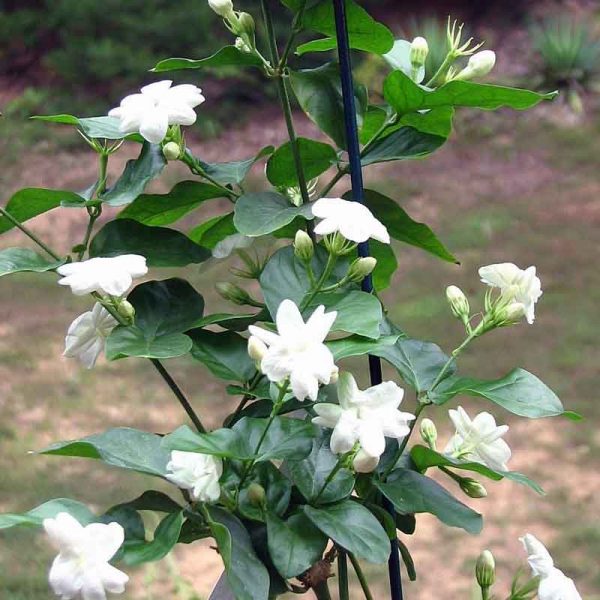
Buy Jasminum sambac, Mogra, Arabian Jasmine Plant Online Lilplants
The Jasmine Sambac, commonly referred to as Arabian Jasmine, is a climbing, evergreen shrub in the Oleaceae family, native to tropical parts of Asia. Best known for their continuous production of fragrant flowers during the warmer months of the year, Jasmine plants are popular picks for the home and garden. They are also used in traditional.

Arabianjasmineplant
Jasminum Sambac, usually known as Arabian Jasmine or Sambac Jasmine, is an exotic and alluring species of jasmine plant that produces highly fragrant flowers. They originate from the tropical Asian regions, such as Bhutan, Bangladesh, Pakistan, and India.
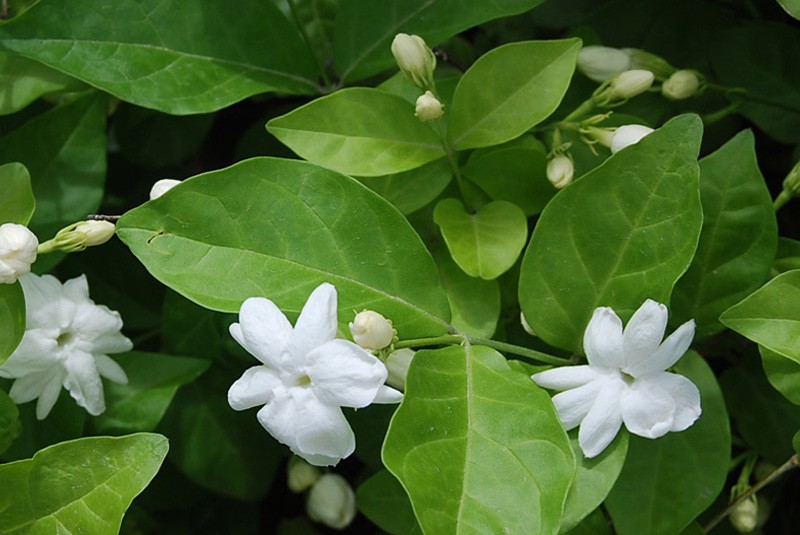
ARABIAN JASMINE JASMINUM SAMBAC
Arabian jasmine is famous for its fragrant flowers and its use in jasmine tea and leis. It is a fast-growing evergreen climbing shrub. Glossy, dark green oval leaves create a beautiful contrast to the highly fragrant, white flowers that fade to pink as they age.
/arabian-jasmine-guide-5190635-hero-5442f623297e44968f580f1af52bd075.jpg)
Arabian Jasmine Care and Growing Guide
The Arabian Jasmine, also known as "sampaguita" in the Philippines, is a popular evergreen shrub that originated from Southeast Asia. Its fame as a decorative plant led to its introduction worldwide. It belongs to the olive family (Oleaceae), which comprises other plants like lilacs and privets.

Jasmine Description, Major Species, & Facts Britannica
Arabian Jasmine or Jasminum sambac is a fragrant flowering plant native to Southeast Asia. It is widely cultivated for its sweet-scented flowers, which are used in perfumes, teas, and other aromatic products. If you're planning to grow Arabian Jasmine at home, here are some essential tips and tricks to help you keep your plant healthy and happy.

Arabian Jasmine — Green Acres Nursery & Supply
Jasminum sambac ( Arabian jasmine or Sambac jasmine) [1] [3] is a species of jasmine native to tropical Asia, from the Indian subcontinent to Southeast Asia. [4] [5] It is cultivated in many places, especially West Asia, South Asia and Southeast Asia.
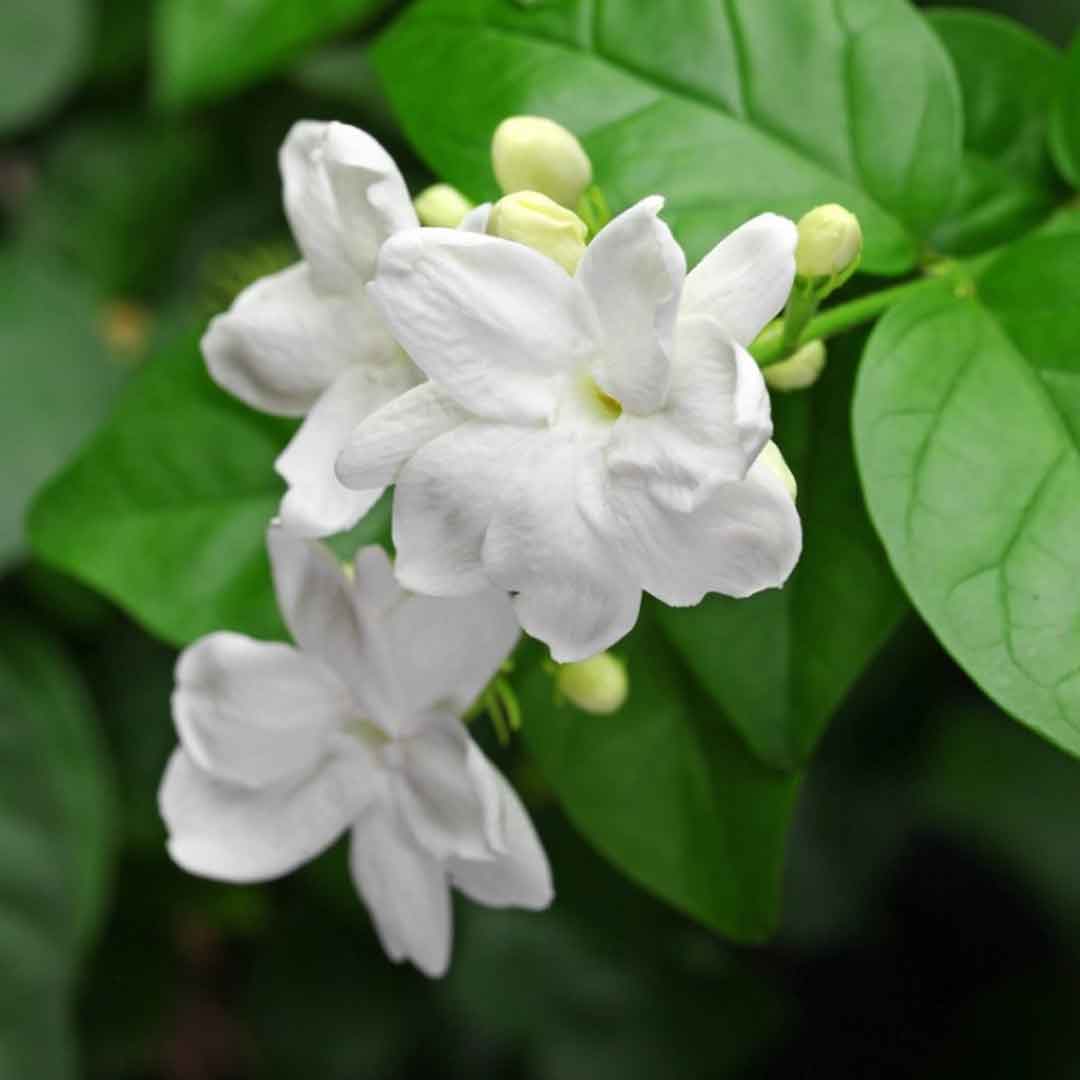
Arabian Jasmine Plant Santhi Online Plants Nursery
Arabian Jasmine, or Jasminum Sambac, is a sweet-scented flower native to Southeast Asia. If you're looking for a fragrant and beautiful plant to add to your garden, look no further than Arabian Jasmine. This popular flowering plant is known for its delicate white blooms and sweet, heady aroma.

Arabian jasmine Arabian jasmine, And so the adventure begins, Adventure
Arabian Jasmine is a fine choice for the garden, but it is also a good selection for planting in outdoor pots and containers. Because of its spreading habit of growth, it is ideally suited for use as a 'spiller' in the 'spiller-thriller-filler' container combination; plant it near the edges where it can spill gracefully over the pot.

Plants Growing In My Potted Garden. Arabian Jasmine Blooms
The Arabian Jasmine plants are widely used in numerous purposes including perfumes, tea aroma, essential oils and certain types of medicines. Often called as Jasminum Sambac, this plant lives in the form of a scrambling evergreen shrub. It has dark green leaves and a series of small white flowers.
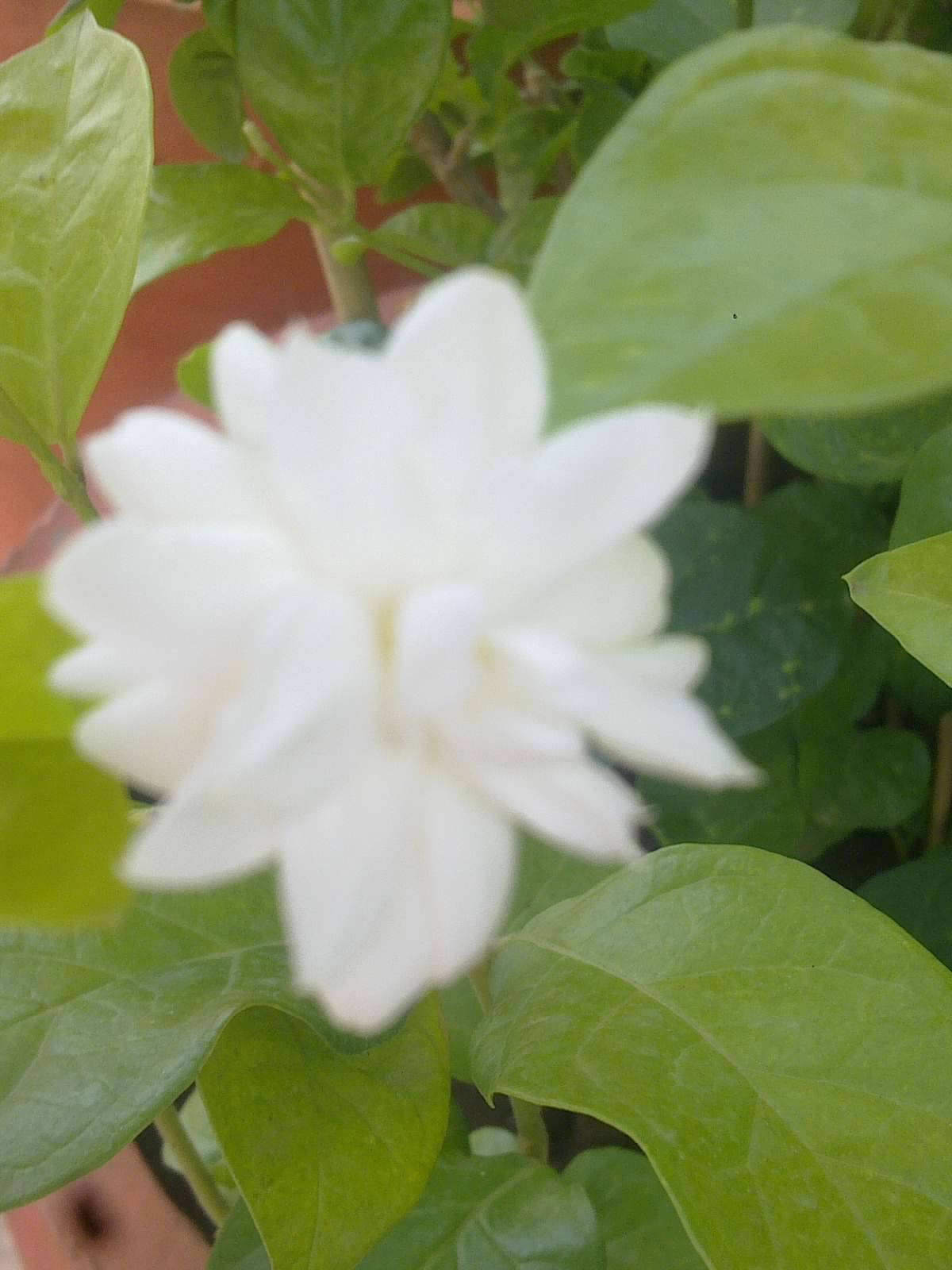
Plants Growing In My Potted Garden. Arabian Jasmine Blooms
Arabian Jasmine (Jasminum sambac, olive family Oleaceae) is an evergreen shrub native to India, but is also planted in most tropical climates around the world.It is the national flower of Indonesia and the Philippines. Arabian jasmine is also called as Biblical Jasmine or mogra or mograw or motiya or yasmeen in India, sampaguita flower in Philippines and melati putih in Indonesia.